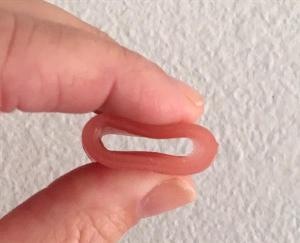Nov 22 2016
ALT, a silicone 3D printing specialist based in Santa Barbara, CA, is developing a new additive manufacturing process for depositing rubber-like silicone materials. The process could be used to create anatomical tissues, medical devices, sensors, microfluidics, and seals/gaskets.
 Credit: www.3ders.org
Credit: www.3ders.org
Silicone, a material with a wide variety of applications from the medical to the aerospace sectors, is finding its feet in the world of 3D printing. Although traditionally associated with casting techniques, silicone—when mixed with other materials—can now be deposited with certain 3D printing systems. ALT, a 3D printing startup from California, is one company attempting to rewrite the rulebook on silicone fabrication techniques, having recently developed a technique for 3D printing multiple silicone-based materials in a single print cycle. According to the company, the process could be used to create automotive parts, medical devices, and much more.
Poly-siloxane, better known as silicone, is a material with low thermal conductivity, low toxicity, high gas permeability, wide operating temperature, and high resistivity. These attributes make silicone useful in all kinds of applications, and researchers have therefore sought to find new and innovative ways of making products with the material. As a thermoset polymer, however, silicone is difficult to 3D print, since it does not quickly melt and cool in the way that typical printer-friendly thermoplastics do.
Despite the obstacles to 3D printing with silicone, ALT has purportedly developed an effective technique for printing multiple kinds of silicone material with varying viscosities, colors, and levels of shore hardness, opening up new material possibilities for 3D printer users in a range of fields. “The simultaneous deposition of a wide range of materials is a significant achievement,” said ALT CEO Dr. Jonathon Barton. “Particularly, being able to deposit unique silicone blends successfully will enable a new set of applications for Additive Manufacturing.”
To demonstrate its new silicone 3D printing technology, ALT created a 3D printed model of a cross-section of a human leg. The model was printed at ALT’s on-site facility, and contains synthetic skin, bone, muscle, adipose, and fascia, with empty spaces left to represent blood vessels. The technology could, however, also be used to create customizable 3D printed cellphone cases, insoles for shoes, or custom shapes, as well as automotive parts, seals, gaskets, medical devices, hearing aids, sensors, microfluidics, and adhesives.
According to ALT, the technology could allow companies and researchers to produce silicone products at much lower costs than those required for traditional silicone production processes.